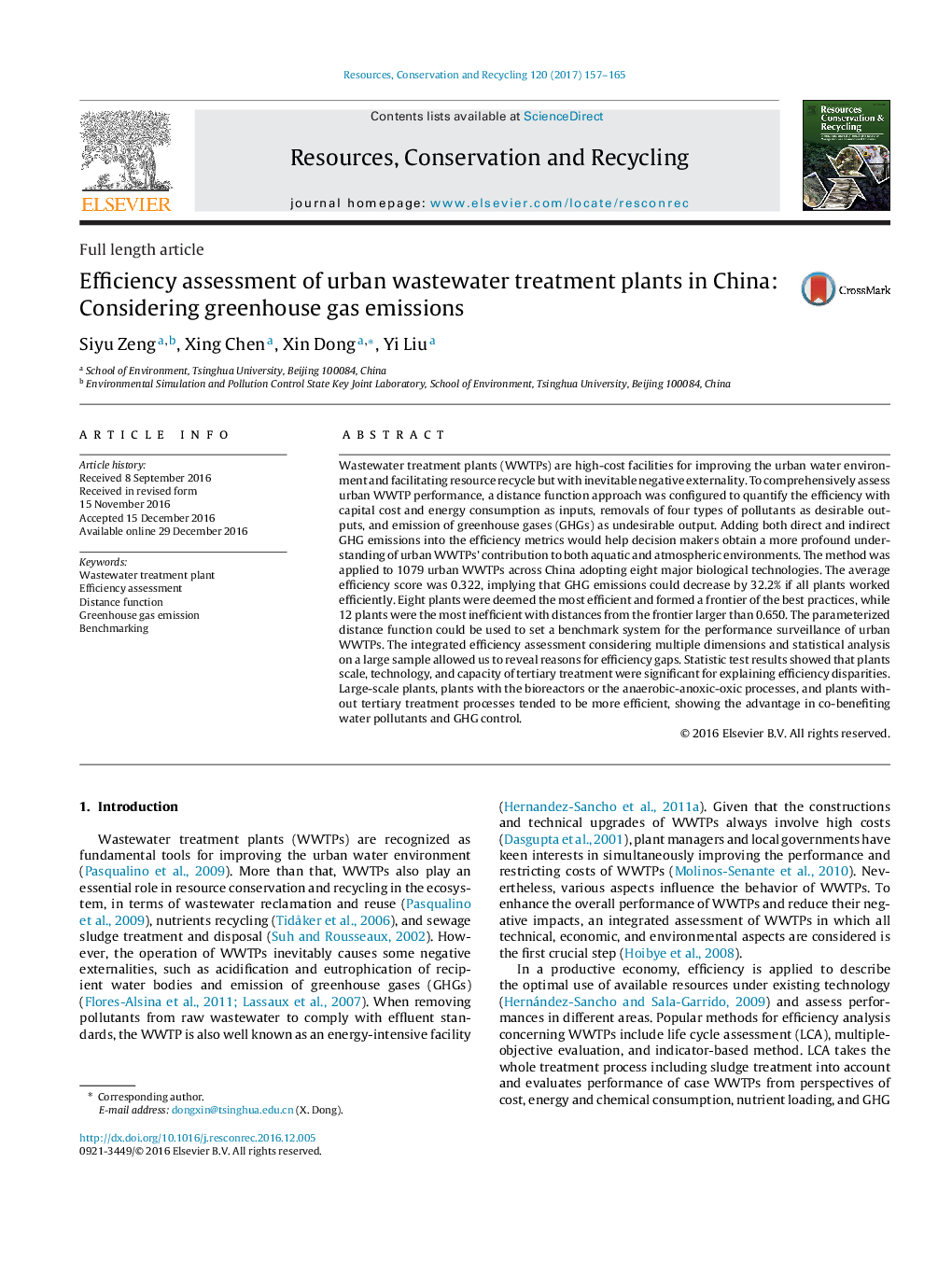| کد مقاله | کد نشریه | سال انتشار | مقاله انگلیسی | نسخه تمام متن |
|---|---|---|---|---|
| 5118695 | 1485672 | 2017 | 9 صفحه PDF | دانلود رایگان |
- An efficiency assessment considering GHG emission was applied to 1079 WWTPs.
- If all WWTPs worked efficiently, GHG emissions could be cut by 32.2% on average.
- The parameterized distance function could assist in WWTP benchmarking.
- WWTPs with large scale and technology of MBR or A2/O showed better performance.
- High inputs made plants containing tertiary treatment processes less efficient.
Wastewater treatment plants (WWTPs) are high-cost facilities for improving the urban water environment and facilitating resource recycle but with inevitable negative externality. To comprehensively assess urban WWTP performance, a distance function approach was configured to quantify the efficiency with capital cost and energy consumption as inputs, removals of four types of pollutants as desirable outputs, and emission of greenhouse gases (GHGs) as undesirable output. Adding both direct and indirect GHG emissions into the efficiency metrics would help decision makers obtain a more profound understanding of urban WWTPs' contribution to both aquatic and atmospheric environments. The method was applied to 1079 urban WWTPs across China adopting eight major biological technologies. The average efficiency score was 0.322, implying that GHG emissions could decrease by 32.2% if all plants worked efficiently. Eight plants were deemed the most efficient and formed a frontier of the best practices, while 12 plants were the most inefficient with distances from the frontier larger than 0.650. The parameterized distance function could be used to set a benchmark system for the performance surveillance of urban WWTPs. The integrated efficiency assessment considering multiple dimensions and statistical analysis on a large sample allowed us to reveal reasons for efficiency gaps. Statistic test results showed that plants scale, technology, and capacity of tertiary treatment were significant for explaining efficiency disparities. Large-scale plants, plants with the bioreactors or the anaerobic-anoxic-oxic processes, and plants without tertiary treatment processes tended to be more efficient, showing the advantage in co-benefiting water pollutants and GHG control.
Journal: Resources, Conservation and Recycling - Volume 120, May 2017, Pages 157-165
